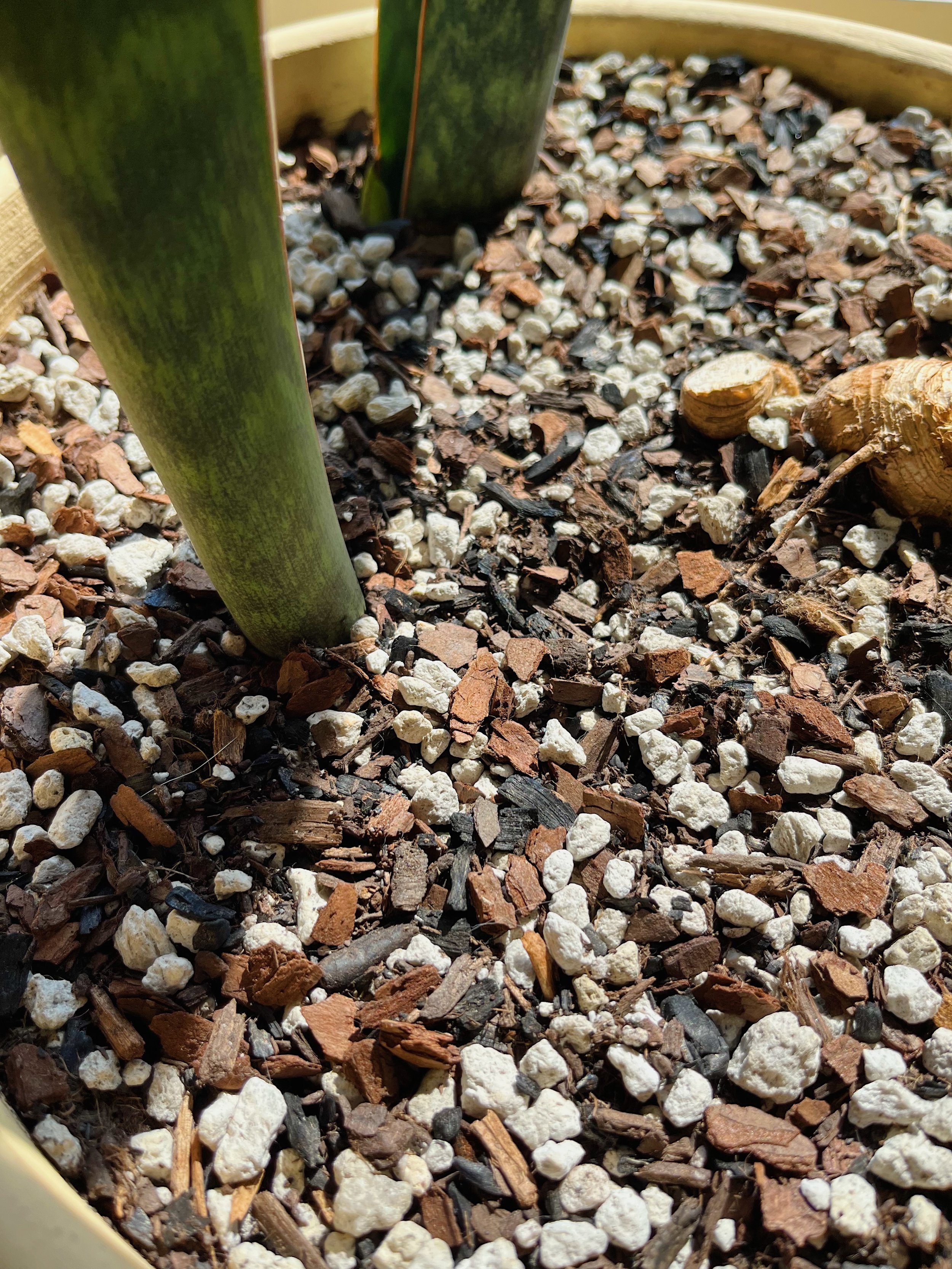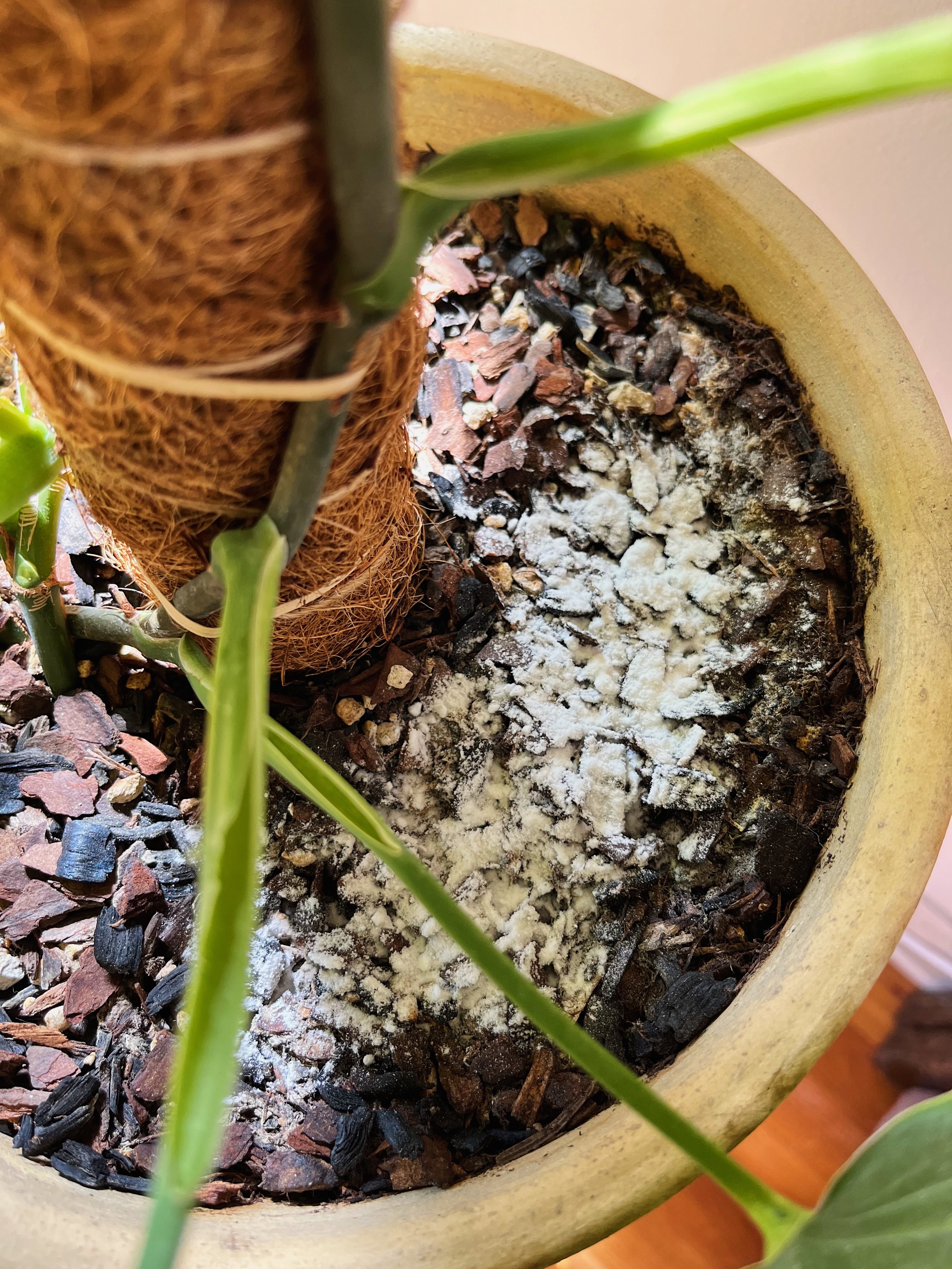Getting Rid of Your Fungus Gnats
It’s the middle of summer, you’re home trying to enjoy yourself and relax, and suddenly a gnat flies up your nose. And another one just flew a little too close to your face. And there’s one over there!
If you’ve ever owned a handful of houseplants, you’ll probably recognize fungus gnats: they’re small flies that thrive in the top couple of inches of wet potting mix, and while they don’t really do anything harmful to you or your plants, it’s hard not to take offense when you see these short-lived insects around your plants and space. So, how do you get rid of them?
The Fungus Gnat Lifecycle
Fungus gnats live—from conception—about a full month, with the adult phase lasting a week or two. One-to-two weeks doesn’t seem like a long time to live as an adult at all, but fungus gnats go through quite the development in a short period of time, shifting from eggs to larvae, to pupas, and to adults in only a couple days for each stage.
Fungus gnats lay their eggs in the top 2 inches of potting mix in indoor plants—they tend to overtake and infest plants that stay too wet for too long, but any plant can be fair game for some casual fungus gnat action. Once their eggs are set in the potting mix, they’ll hatch into larvae, which do feed on fine root hairs of your houseplants. While this isn’t a problem in minor or average cases, larger infestations can sometimes stunt plant growth.
From the larva stage, they turn into pupas, and then they finally gain wings, shifting into their adult form, which is when people typically notice them.
When you have a lot of houseplants, you’ll probably end up seeing a fungus gnat or two around.
Why They’re Sticking Around
Houseplants are more likely to attract fungus gnats when their potting mix stays consistently wet—also a catalyst for root rot—but the reality is that any plant can get them at any time. While they’re more prevalent in the spring and summer months in most areas, they can still be found flying around indoors in the winter.
If one of your plants has fungus gnats, it could be a good time to reexamine the way in which they’re being taken care of. Are they in low light where the water doesn’t get a chance to be used up by your plant? Are you watering maybe a little too frequently? Or maybe you just have too many plants where they can bounce around from whatever plant is currently wet at the moment to lay their eggs. Whatever the reason is, identifying the cause of their appearance is one of the first steps in controlling and stopping fungus gnats.
Fungus gnats love to lay their eggs in the top 2” of potting mix—using top dressing or soil amendments will help discourage them.
Putting an End to Them
Like other houseplant pests, getting rid of them boils down to being able to break the lifecycle, killing both adults and larvae after any remaining eggs have hatched. There are a handful of ways to go about doing this.
Diatomaceous earth (food grade)
This is a white, powdery substance that is made from the fossilized remains of diatoms, an aquatic organism. Their skeletons are made of silica and when crushed into a powder form, create diatomaceous earth.
The sharp, crushed shards and dry, powdery nature is perfect for eliminating fungus gnats and other soft-bodied insects. Upon contact, oils and fats are absorbed from the insect’s exoskeleton, with the crushed, abrasive shards finishing the rest of the job quickly. For this to be an effective treatment, it needs to stay on top of the potting mix of the affected plant, undisturbed. If you water the powder into the potting mix after a couple days, break the diatomaceous earth back out, and reapply. Once gnats fly onto the powder—and they will—it takes immediate effect. Continue reapplication as needed until you stop noticing gnats.
If you’re looking for diatomaceous earth, we carry Good Dirt’s Plantbiotics, which is comprised of diatomaceous earth along with plenty of beneficial bacteria and microorganisms that help recharge and nourish your potting mix.
Mosquito bits
Despite the name, mosquito bits can also be used for fungus gnats. This granular product contains a species-specific bacteria that targets both gnat and mosquito larvae in standing water, but it is still effective when used in the potting mix. Once applied, the beneficial effects of mosquito bits will last for up to two weeks.
To apply mosquito bits, you’ll want to mix the granules as instructed into water, and then use that water to hydrate your plants, inoculating their potting mix with some beneficial bacteria that helps take care of gnat larvae in the process.
Like most insecticides and treatments, you’ll need to reapply a few times over the course of a handful of weeks to get the desired effect and break the lifecycle.
Top dressing for plants
While not as directly effective as the first two solutions, adding a layer of horticultural sand to the top of your potting mix prevents adult gnats from getting in there to lay their eggs in the first place.
The main downside of this method is that the sand will stay on top of the potting mix, whereas diatomaceous earth and mosquito are both absorbed into the potting mix over time. You won’t have to usually reapply horticultural sand, but it can prevent air from getting to your plant’s roots by blocking the top of the potting mix since sand is a fine, dense material. Great for gnats, but maybe not-so great for plants longterm.
Have you experienced fungus gnats? Did you do anything differently and have success in eliminating them? Let us know in the comments below!
Sprinkling diatomaceous earth all around the potting mix of your plants is a surefire way to get rid of fungus gnats.
Words by: Egan Thorne
Photos by: Egan Thorne



